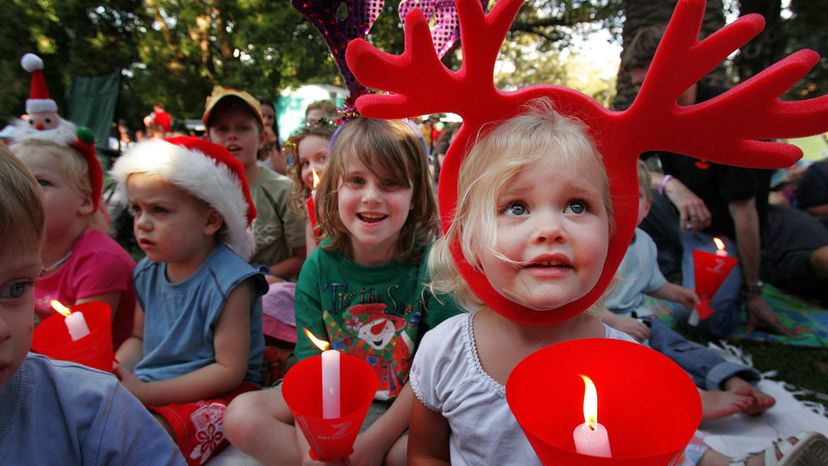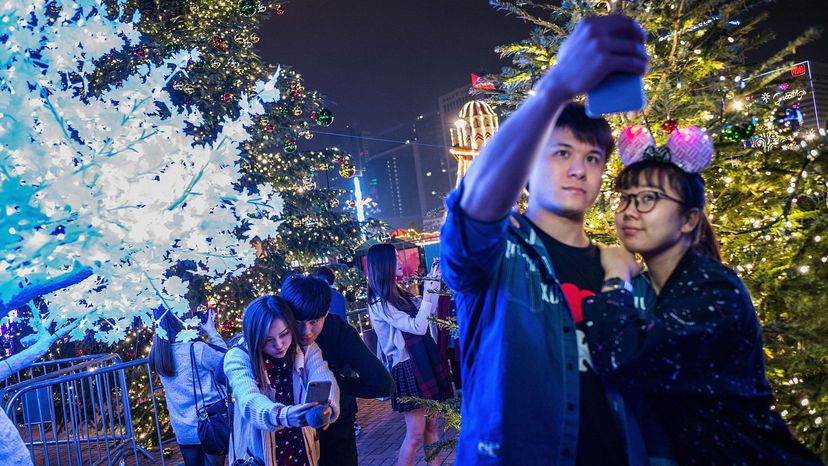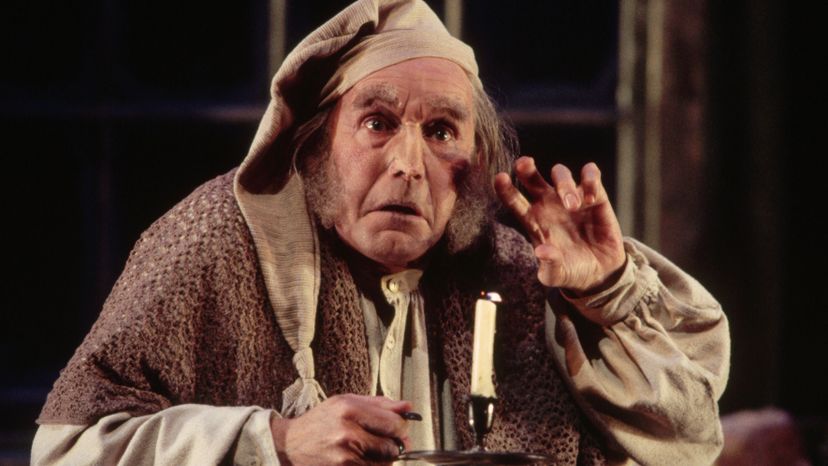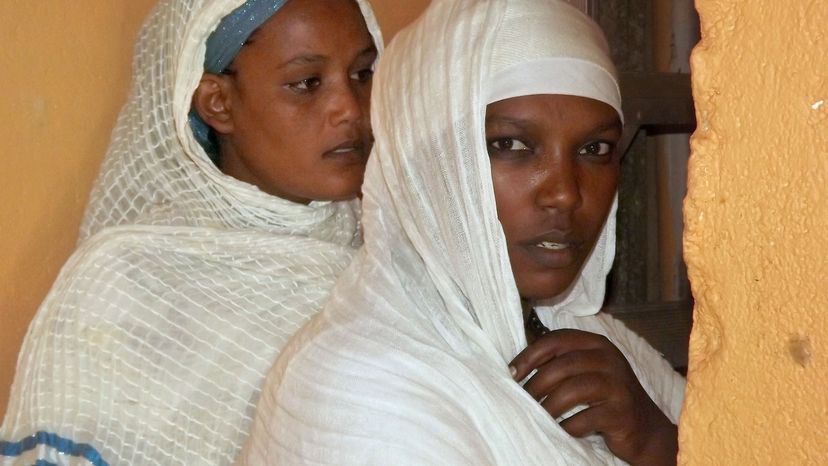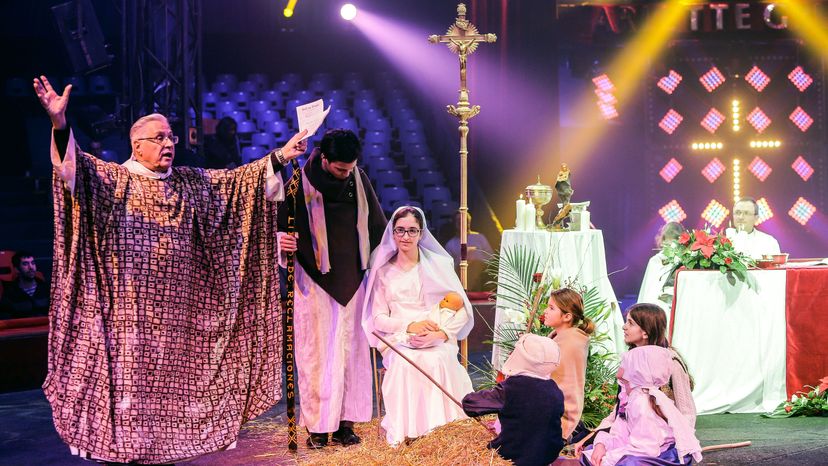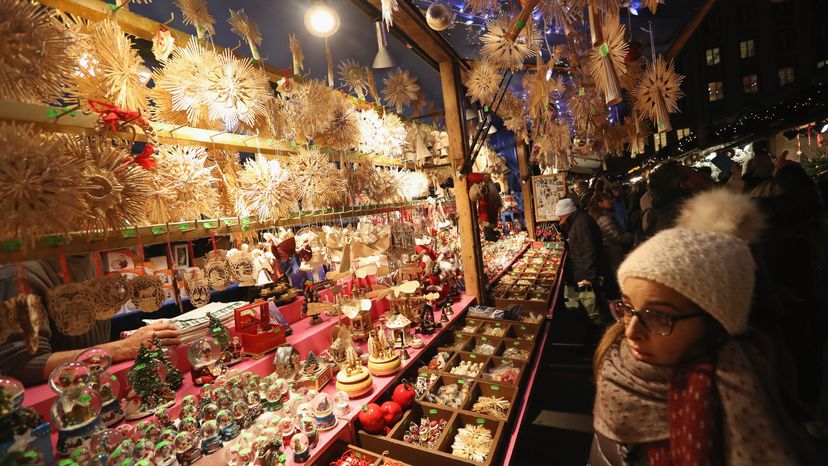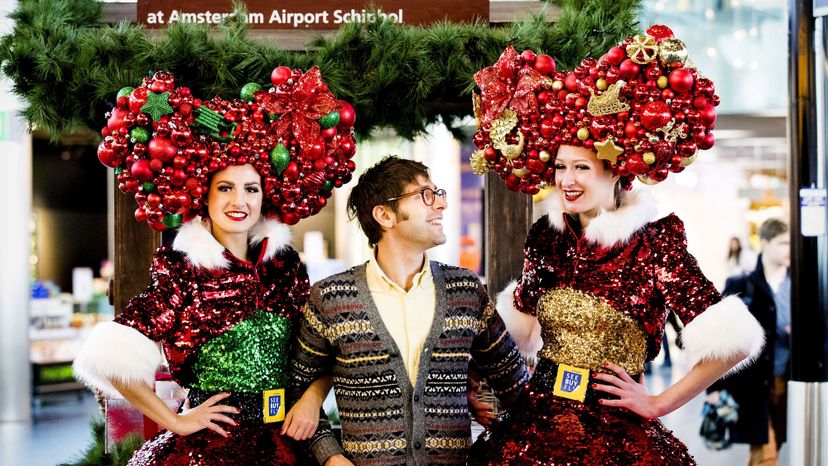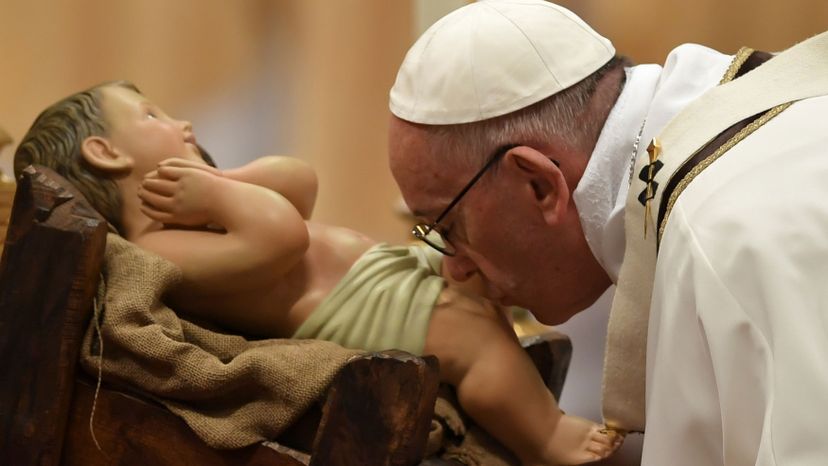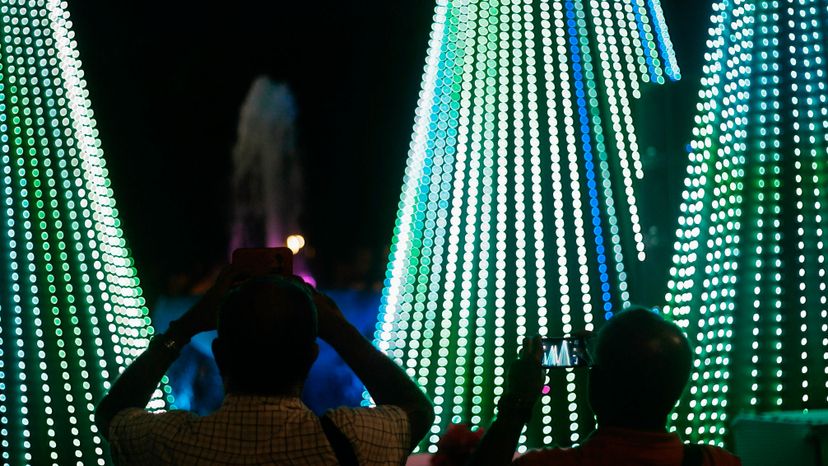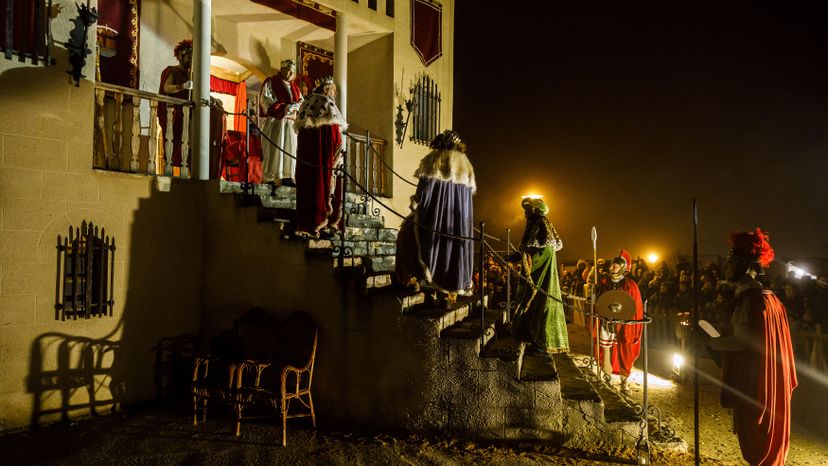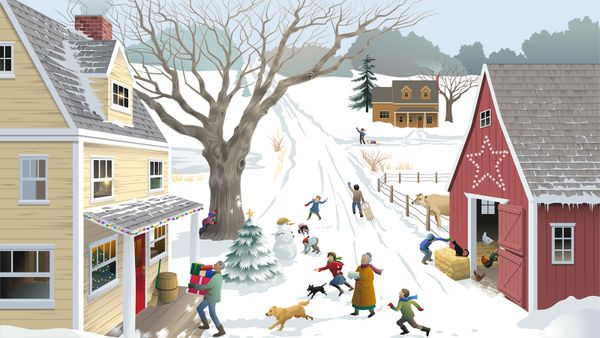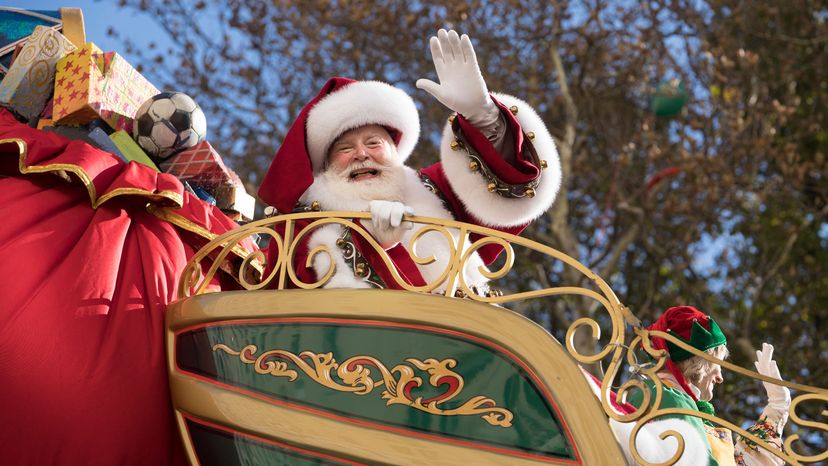
All over the world, Christmas celebrations reflect local culture and traditions. The festivities can be startlingly different from country to country, focusing on different aspects of the nativity story.
But whether you're celebrating Sheng Dan Jieh in China or awaiting Pere Noel in France, you're sharing in the wonder and magic of the Christmas season. In the following pages, we'll take a look at Christmas traditions in countries around the world, from Sweden to Australia, from England to China.
Advertisement
- Christmas Traditions in Australia: In Australia, December 25 falls during summer vacation, so many of the country's Christmas festivities take place outdoors. The most popular event of the Christmas season is called Carols by Candlelight. People come together at night to light candles and sing Christmas carols outside. The stars shining above add to the sights and sounds of this wonderful outdoor concert.
- Christmas Traditions in China: The small number of Christians in China call Christmas Sheng Dan Jieh, which means Holy Birth Festival. They decorate their homes with evergreens, posters, and bright paper chains. Families put up a Christmas tree called a "tree of light" and decorate it with beautiful lanterns, flowers and red paper chains that symbolize happiness. They cut out red pagodas to paste on the windows, and they light their houses with paper lanterns, too.
- Christmas Traditions in England: It is cold, wet and foggy in England at Christmastime. The day before Christmas is very busy for families in England. They wrap presents, bake cookies, and hang stockings over the fireplace. Then everyone gathers around the tree as someone tells a classic holiday story, such as "A Christmas Carol." Children write a letter to Father Christmas with their wishes and toss their letter into the fire so their wishes can go up the chimney. After the children fall asleep on Christmas Eve, Father Christmas comes to visit.
- Christmas Traditions in Ethiopia: Ethiopia follows the ancient Julian calendar, so Ethiopians celebrate Christmas on January 7. The Ethiopian Orthodox Church's celebration of Christ's birth is called Ganna. It is a day when families attend church. Everyone dresses in white. Most Ethiopians don a traditional shamma — a thin, white cotton wrap with brightly colored stripes across the ends. Twelve days after Ganna, on January 19, Ethiopians begin the three-day celebration called Timkat, which commemorates the baptism of Christ.
- Christmas Traditions in France: Christmas celebrations France begin on December 5, which is St. Nicholas Eve, but Christmas Eve is the most special time in the French celebration of Christmas. Church bells ring and voices sing French carols called noels. On Christmas Day, families go to church and then enjoy an abundant feast of wonderful dishes, ending with the traditional buche de Noel, a rich buttercream-filled cake shaped and frosted to look like a yule log.
- Christmas Traditions in Germany: German families prepare for Christmas throughout the cold December. Four Sundays before Christmas, they make an Advent wreath of fir or pine branches that has four colored candles. They light a candle on the wreath each Sunday, sing Christmas songs and eat Christmas cookies. In the weeks leading up to Christmas, homes are filled with the delightful smells of baking loaves of sweet bread, cakes filled with candied fruits, and spicy cookies called lebkuchen.
- Christmas Traditions in Holland: Dutch children in Holland, or the Netherlands, eagerly await the arrival of Sinterklaas on St. Nicholas Day on December 6. Sinterklaas is a kindly bishop. He wears red robes and a tall, pointed mitre on his head. Sinterklaas travels by ship from Spain to Amsterdam's harbor every winter. He brings his white horse and a huge sack full of gifts for the children. Families celebrate St. Nicholas Eve at home with lots of good food, hot chocolate and a letterbanket, a "letter cake" made in the shape of the first letter of the family's last name.
- Christmas Traditions in Italy: The Christmas season in Italy begins on the first Sunday of Advent, which is four Sundays before Christmas. Christmas fairs feature fireworks and bonfires along with holiday music. Families go to the Christmas markets to shop for gifts and new figures for the manger scene. Some families set up a Christmas tree and decorate it. Families set up their presepio, or manger scene, on the first day of the novena. They gather before the presepio each morning or evening of novena to light candles and pray.
- Christmas Traditions in Mexico: The weather is warm and mild in Mexico during the Christmas season. Families shop for gifts, ornaments, and good things to eat in the market stalls, called puestos. They decorate their homes with lilies and evergreens. Family members cut intricate designs in brown paper bags to make lanterns, or farolitos. They place a candle inside and then set the farolitos along sidewalks, on windowsills, and on rooftops and outdoor walls to illuminate the community with the spirit of Christmas.
- Christmas Traditions in Spain: The Christmas season begins in Spain on December 8, with a weeklong observance of the Feast of the Immaculate Conception. Evergreens decorate the churches and outdoor markets throughout the Christmas season. Tambourines, gourd rattles, castanets, and miniature guitars are offered for sale to enliven the singing and dancing in the streets. Children go from house to house reciting verses or singing carols for sweets, toys, or small instruments.
- Christmas Traditions in Sweden: In Sweden, the Christmas festivities begin on December 13 with St. Lucia's Day, which celebrates the patron saint of light. The eldest daughter gets up before dawn and dresses as the "Queen of Light" in a long, white dress. She wears a crown of leaves. Singing "Santa Lucia," the Lucia Queen goes to every bedroom to serve coffee and treats to each member of the family. The younger children in the family help, too. The whole family helps to select the Christmas tree just a day or two before Christmas.
